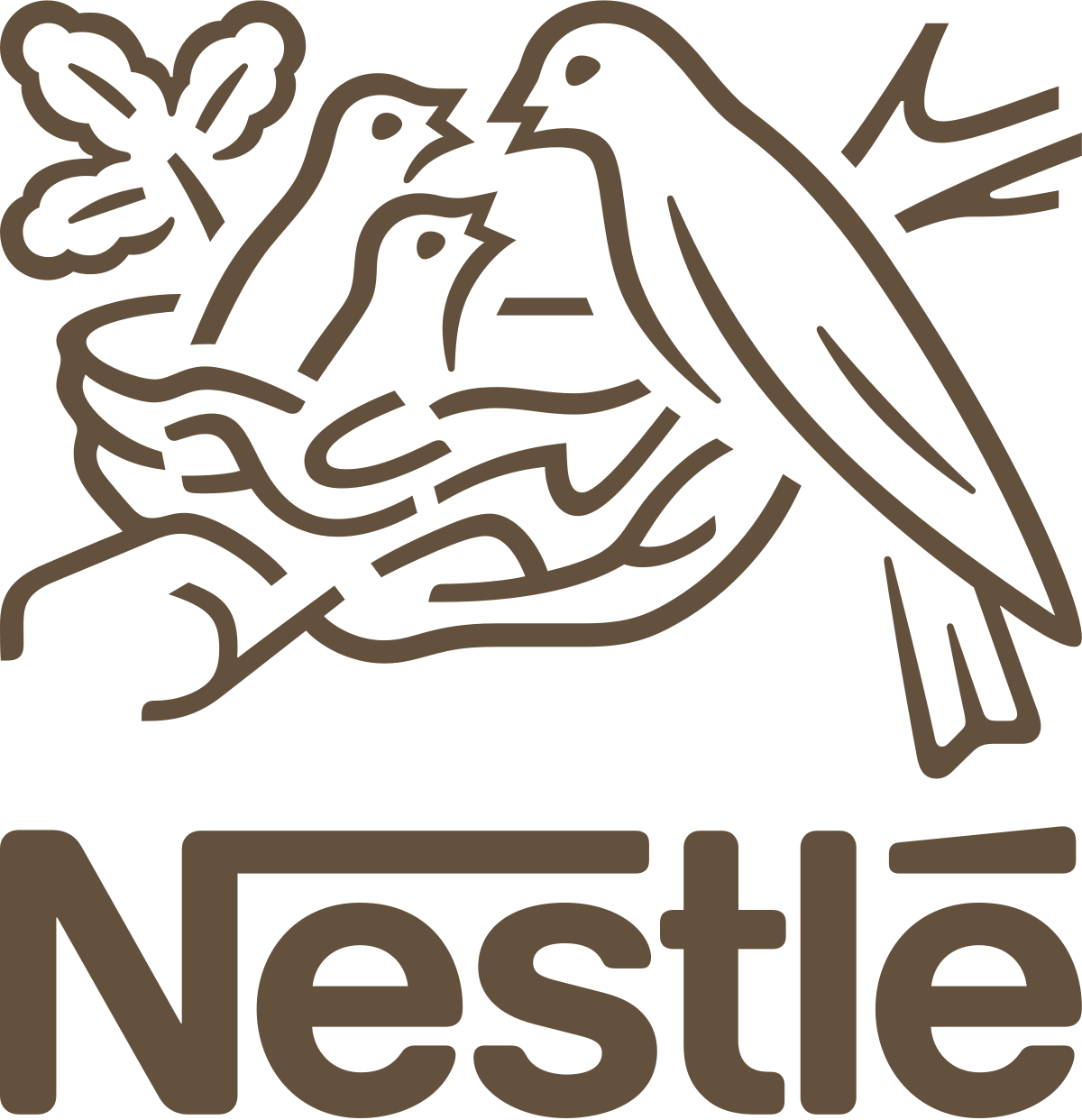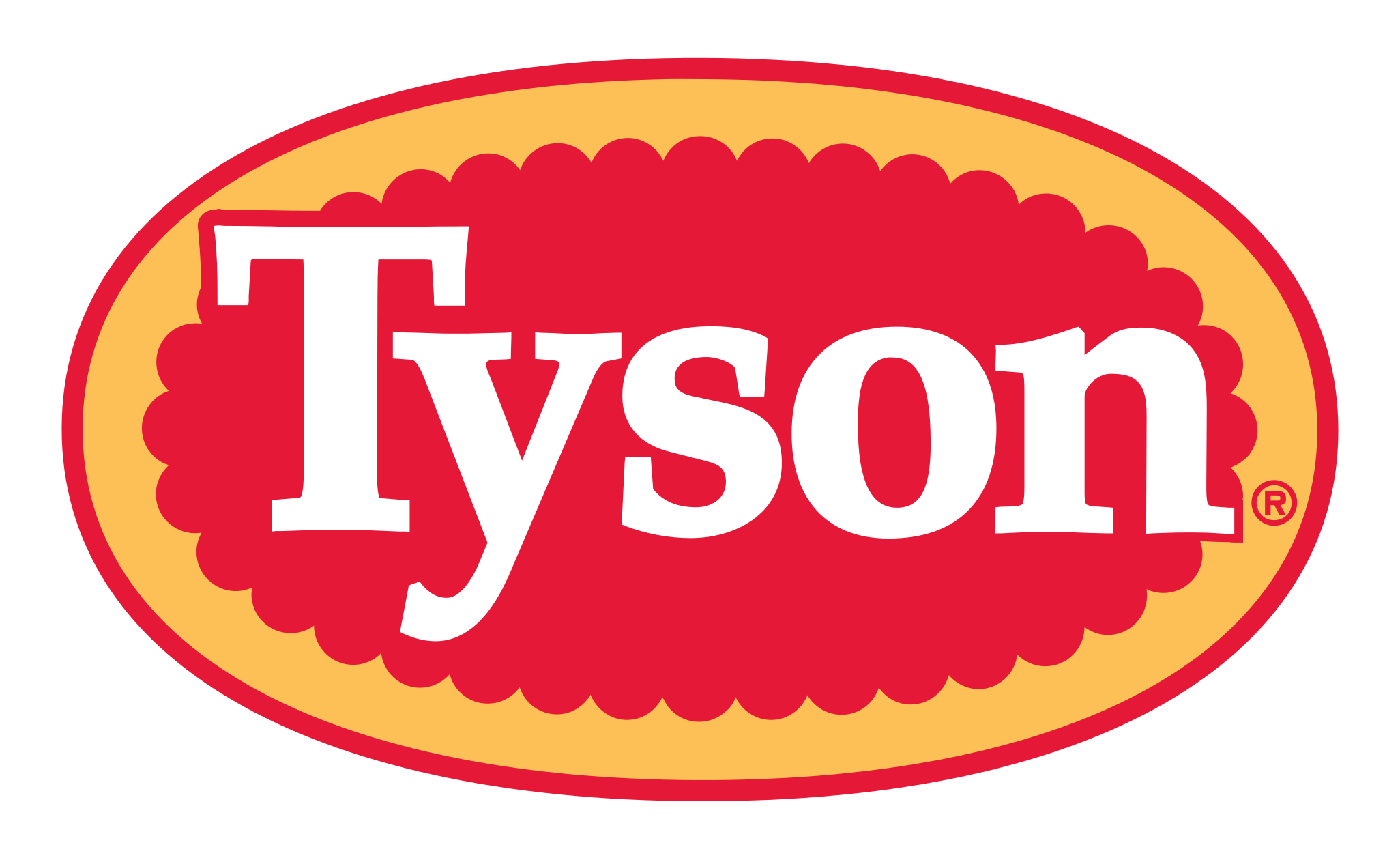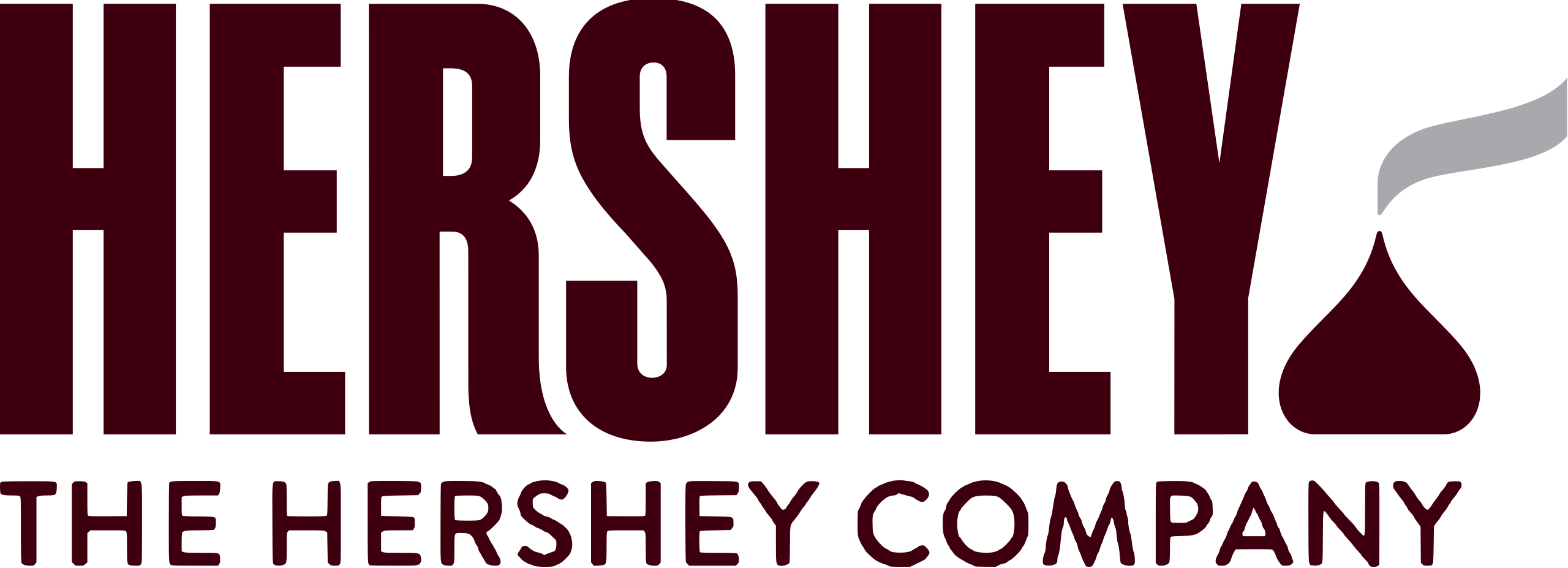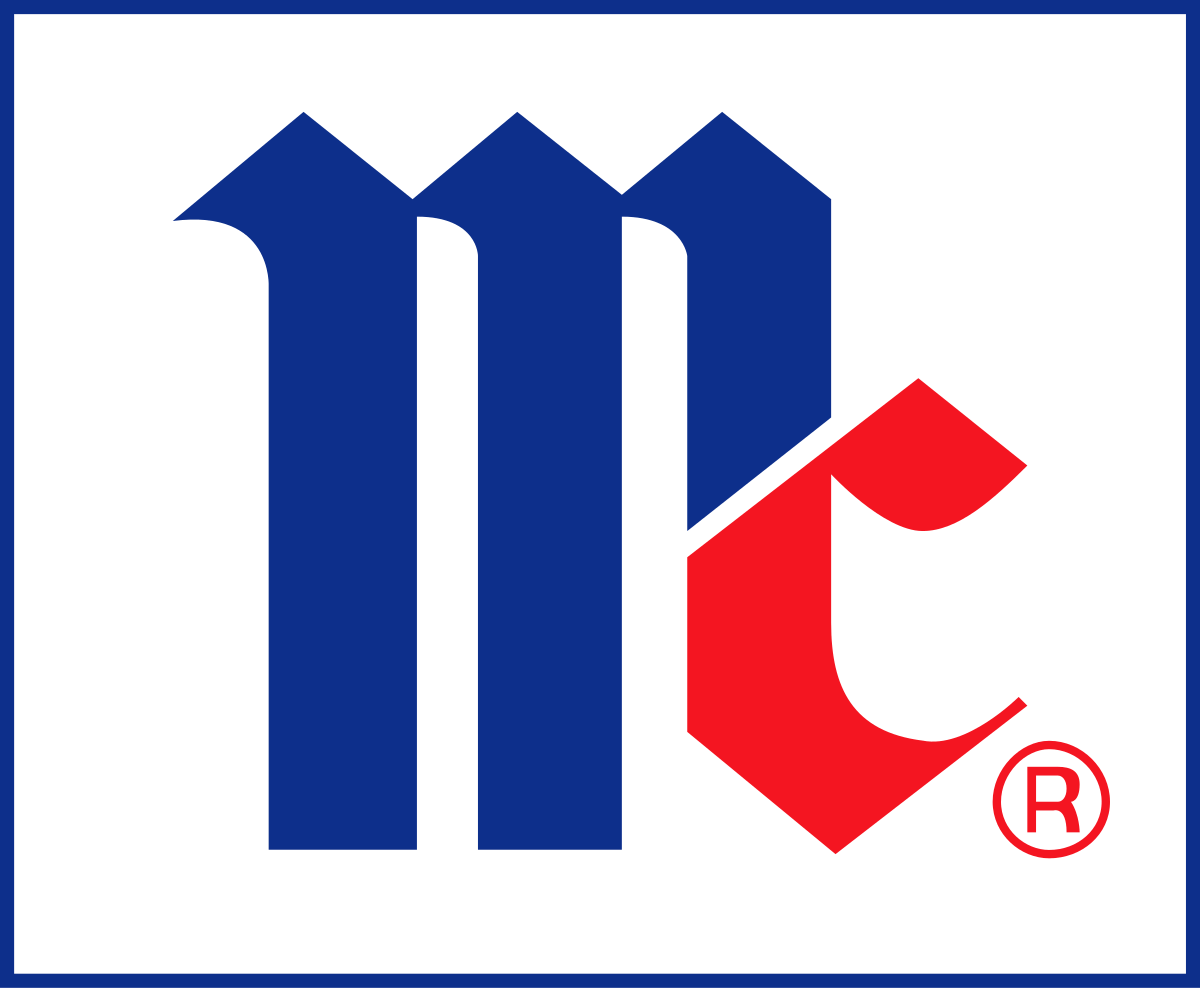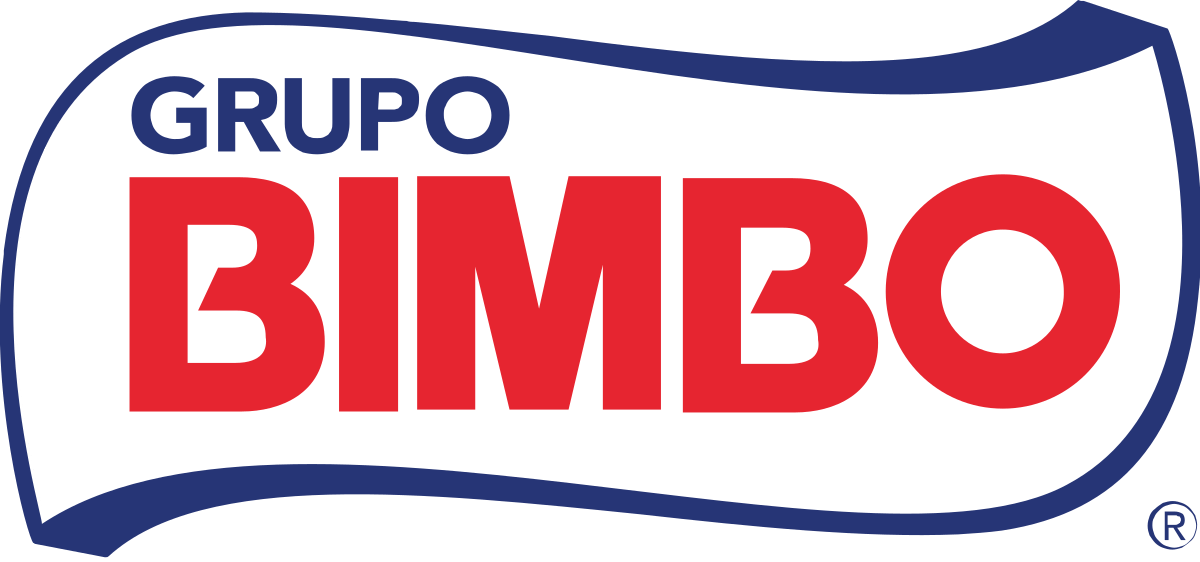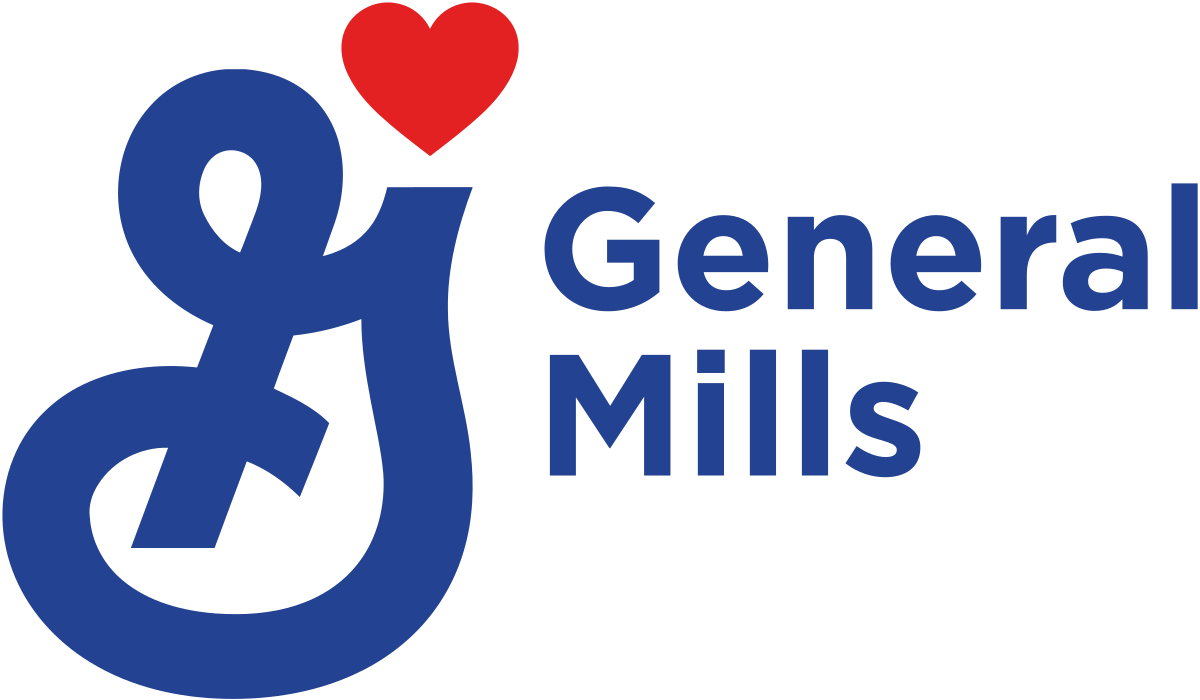Global Ultra Processed Food Market By Product Type, By Distribution Channel, By Region & Segmental Insights Trends and Forecast, 2024 – 2034
- Industry: Food & Beverages
- Report ID: TNR-110-1327
- Number of Pages: 420
- Table/Charts : Yes
- October, 2024
- Base Year : 2024
- No. of Companies : 10+
- No. of Countries : 29
- Views : 10090
- Covid Impact Covered: Yes
- War Impact Covered: Yes
- Formats : PDF, Excel, PPT
Ultra-processed foods are industrial formulations made primarily from sugar, fats, and refined starches, often containing additives like preservatives, flavor enhancers, and colorings. Examples include sugary drinks, instant noodles, packaged snacks, and ready-to-eat meals. “In Terms of Revenue, the Global Ultra Processed Food Market Was Worth US$ 593.4 Bn in 2023, Anticipated to Witness a CAGR of 7.8% During 2024 – 2034”.
In daily life, these foods provide convenience, requiring minimal preparation and cooking time. For instance, frozen pizzas or microwaveable meals can save busy individuals significant time. While ultra-processed foods often have a longer shelf life and are affordable, they are linked to health concerns like obesity and metabolic disorders. Nevertheless, their appeal lies in their taste and accessibility, making them a staple for many consumers worldwide.
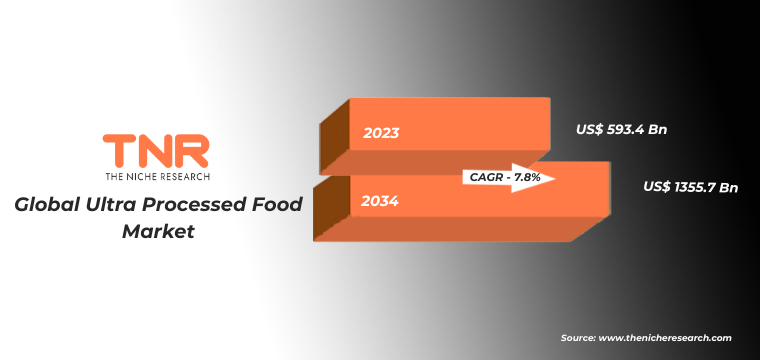
Ranking Of Countries By Prevalence Of Frequent Ultra-Processed Food Consumption:
Ranking countries by the prevalence of frequent ultra-processed food consumption reveals significant dietary trends across the globe. As of 2023, the United States tops the list, with over 60% of daily calorie intake derived from ultra-processed foods, driven by convenience and fast food culture.
Following closely are countries like Mexico and Canada, where the prevalence also exceeds 50%. In Europe, the UK and Germany exhibit high levels of consumption, with around 45% of calories coming from ultra-processed sources. In contrast, countries like Japan and Italy show lower prevalence rates, typically around 25-30%, as traditional diets emphasize whole foods. These trends reflect cultural attitudes towards food and the impact of globalization on dietary habits.

Global Ultra Processed Food Market Dynamics
Global Ultra Processed Food Market Growth Drivers:
- Urbanization and Busy Lifestyles: Rapid urbanization has led to a significant increase in dual-income households, resulting in busier lifestyles. In 2022, according to the studies over 54% of the global population lived in urban areas. As people seek convenience, ultra-processed foods like ready-to-eat meals and snack bars have gained popularity for their quick preparation and ease of consumption, meeting the needs of time-strapped consumers.
- Increasing Consumer Demand for Convenience: The growing demand for convenience foods is propelling the ultra-processed food market. According to a 2023 survey by Food & Drink Europe, 73% of consumers prefer ready-to-eat options. Products such as frozen dinners and instant soups cater to this demand, allowing consumers to enjoy quick meals without extensive cooking, thereby driving market growth significantly.
Global Ultra Processed Food Market Restraints:
- Health Concerns and Consumer Awareness: Growing awareness of the health risks associated with ultra-processed foods poses a significant restraint. Research from the World Health Organization in 2023 highlighted links between these foods and obesity, diabetes, and heart disease. As consumers increasingly seek healthier alternatives, the demand for fresh, organic, and minimally processed foods is rising, challenging the market.
- Regulatory Challenges: Stringent regulations surrounding food labeling and health claims can hinder the growth of the ultra-processed food market. In 2022, several countries, including Mexico, implemented taxes on sugary beverages and stricter labeling requirements to combat obesity. These regulatory measures can increase production costs and limit marketing strategies for ultra-processed food manufacturers, impacting their market expansion efforts.
Global Ultra Processed Food Market Opportunities:
- Innovation in Healthier Options: There is a growing opportunity for manufacturers to innovate healthier ultra-processed food options. In 2023, companies like Nestlé launched reduced-sugar and fortified products to meet consumer demands for healthier alternatives. This trend allows brands to capture market share by appealing to health-conscious consumers while maintaining convenience, thus enhancing their product portfolios.
- Expansion in Emerging Markets: Emerging markets present significant growth opportunities for the ultra-processed food market. According to a 2022 report by the International Food Policy Research Institute, rising disposable incomes in regions like Southeast Asia and Africa are driving demand for convenience foods. Brands can leverage this trend by introducing localized products, such as spicy instant noodles, to cater to diverse consumer preferences.
Global Ultra Processed Food Market Trends:
- Clean Label Movement: The clean label trend is gaining traction as consumers demand transparency in food ingredients. According to a 2023 report by the International Food Information Council, 60% of consumers prefer products with recognizable ingredients. Brands like Kraft have responded by reformulating their products to eliminate artificial additives and preservatives, enhancing consumer trust and brand loyalty.
- Plant-Based Ultra-Processed Foods: The rise of plant-based diets is influencing the ultra-processed food market, with more companies launching plant-based alternatives. In 2023, Beyond Meat expanded its product line to include plant-based sausages and burgers, targeting flexitarians and health-conscious consumers. This trend reflects a growing consumer interest in sustainable and healthier food options, driving innovation in the sector.
Global Ultra Processed Food Market Segmental Analysis:
Ultra Processed Food Market By Product Type
- Beverages
- Snacks
- Dairy Products
- Cereals and Grains
- Meat and Fish Products
- Sauces and Condiments
- Others
By product type, dairy products subjugated the global ultra processed food market, capturing a revenue share of 14.8% in 2023. This growth can be attributed to the increasing popularity of ready-to-eat dairy options, such as flavored yogurts, cheese spreads, and milk-based beverages. For instance, brands like Danone have successfully introduced innovative products, including probiotic drinks and high-protein yogurts, catering to health-conscious consumers. Additionally, the demand for lactose-free and plant-based dairy alternatives has surged, as seen with companies like Oatly and Almond Breeze launching products that appeal to lactose-intolerant individuals and those seeking vegan options. This trend underscores the versatility and adaptability of dairy products in meeting diverse consumer needs within the ultra-processed food sector.
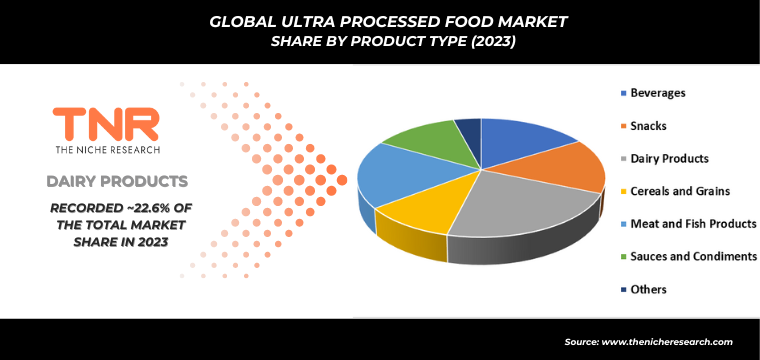
Ultra Processed Food Market By Distribution Channel
- Online
- Offline
- Supermarkets and Hypermarkets
- Convenience Stores
- Specialty Stores
- Others
Online segment is projected to be the fastest-growing segment in the global ultra processed food market, capturing a notable revenue share of 23.5%. This growth is driven by the increasing convenience of online shopping and the rise of e-commerce platforms like Amazon and Walmart. In 2022, reports showed that online grocery sales surged by 25% as consumers preferred the ease of home delivery for packaged foods, snacks, and beverages. Companies like Nestlé have optimized their online presence by partnering with delivery services to enhance accessibility. Additionally, the popularity of subscription services, such as SnackCrate and HelloFresh, has further fueled this trend, allowing consumers to explore new ultra-processed food options with minimal effort.
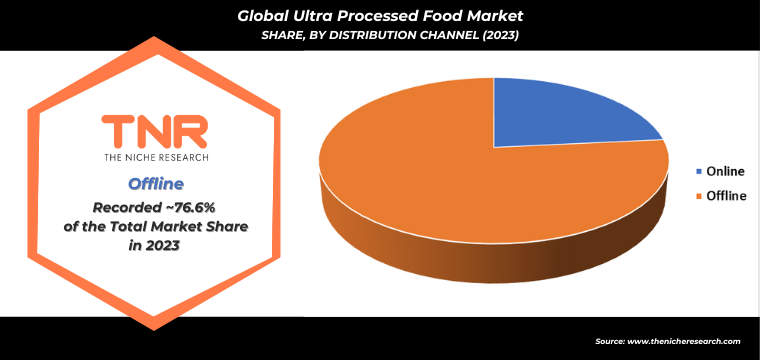
Ultra Processed Food Market By Region
- North America (U.S., Canada, Mexico, Rest of North America)
- Europe (France, The UK, Spain, Germany, Italy, Nordic Countries (Denmark, Finland, Iceland, Sweden, Norway), Benelux Union (Belgium, The Netherlands, Luxembourg), Rest of Europe)
- Asia Pacific (China, Japan, India, New Zealand, Australia, South Korea, Southeast Asia (Indonesia, Thailand, Malaysia, Singapore, Rest of Southeast Asia), Rest of Asia Pacific)
- Middle East & Africa (Saudi Arabia, UAE, Egypt, Kuwait, South Africa, Rest of Middle East & Africa)
- Latin America (Brazil, Argentina, Rest of Latin America)
Middle East & Africa is projected to be the fastest-growing region in the ultra processed food market during the forecast period, driven by rising urbanization and increasing disposable incomes. The region’s growing population, especially in countries like Saudi Arabia and Nigeria, is creating a heightened demand for convenient food options. For instance, brands such as Almarai have expanded their offerings of ready-to-eat meals and flavored dairy products to cater to busy consumers. Additionally, the surge in online food delivery services, exemplified by Talabat and Jumia Food, is facilitating access to a variety of ultra-processed foods, making them more popular among the region’s increasingly urban lifestyle.
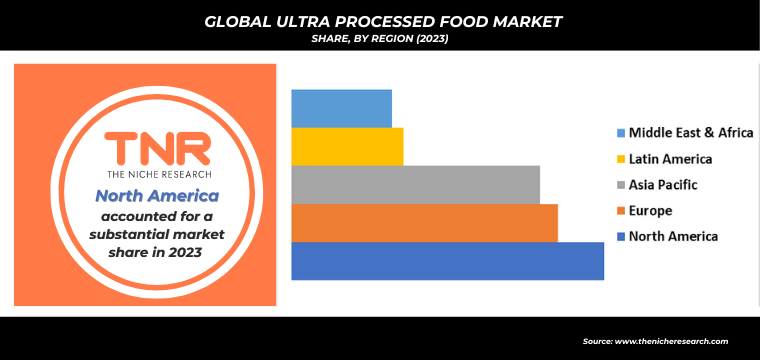
Competitive Landscape
The competitive landscape of the global ultra-processed food market is characterized by numerous key players vying for market share. Companies like Nestlé, PepsiCo, and Unilever lead the market, consistently innovating to meet evolving consumer preferences. In 2023, Nestlé launched its plant-based “Awesome Burger,” catering to the growing demand for sustainable food options.
Additionally, PepsiCo’s acquisition of Rockstar Energy in 2021 expanded its product portfolio in the rapidly growing energy drink segment. Local brands are also emerging, such as Almarai in the Middle East, focusing on dairy products. This competitive environment encourages continuous product development and marketing strategies aimed at capturing diverse consumer segments and addressing health concerns associated with ultra-processed foods.
- Expansion into E-Commerce (February 2023): Kraft Heinz announced a partnership with various e-commerce platforms to enhance its online presence, enabling better distribution of its ultra-processed food products. This move aims to meet the increasing demand for online grocery shopping, which surged during the pandemic and continues to grow.
- Healthier Formulation Initiatives (August 2022): Unilever pledged to reduce sugar and saturated fat content across its product lines by 2025. This initiative reflects the company’s response to consumer health concerns regarding ultra-processed foods, aiming to provide healthier options while maintaining product taste and appeal.
Global Ultra Processed Food Market Scope:
| Report Specifications | Details |
| Market Revenue in 2023 | US$ 593.4 Bn |
| Market Size Forecast by 2034 | US$ 1355.7 Bn |
| Growth Rate (CAGR) | 7.8% |
| Historic Data | 2016 – 2022 |
| Base Year for Estimation | 2023 |
| Forecast Period | 2024 – 2034 |
| Report Inclusions | Market Size & Estimates, Market Dynamics, Competitive Scenario, Trends, Growth Factors, Market Determinants, Key Investment Segmentation, Product/Service/Solutions Benchmarking |
| Segments Covered | By Product Type, By Distribution Channel, By Region |
| Regions Covered | North America, Europe, Asia Pacific, Middle East & Africa, Latin America |
| Countries Covered | U.S., Canada, Mexico, Rest of North America, France, The UK, Spain, Germany, Italy, Nordic Countries (Denmark, Finland, Iceland, Sweden, Norway), Benelux Union (Belgium, The Netherlands, Luxembourg), Rest of Europe, China, Japan, India, New Zealand, Australia, South Korea, Southeast Asia (Indonesia, Thailand, Malaysia, Singapore, Rest of Southeast Asia), Rest of Asia Pacific, Saudi Arabia, UAE, Egypt, Kuwait, South Africa, Rest of Middle East & Africa, Brazil, Argentina, Rest of Latin America |
| Key Players | Archer Daniels Midland Co., Campbell Soup Co., Corporativo Bimbo SA de CV, Danone SA, Dr. August Oetker KG, General Mills Inc., Hansen Foods LLC, Hormel Foods Corp., International Flavors and Fragrances Inc., McCain Foods Ltd., Mondelez International Inc., Nestle SA, One Planet Pizza, Otsuka Holdings Co. Ltd., Sudzucker AG, Sysco Corp., The Kraft Heinz Co., Tyson Foods Inc., Unilever PLC |
| Customization Scope | Customization allows for the inclusion/modification of content pertaining to geographical regions, countries, and specific market segments. |
| Pricing & Procurement Options | Explore purchase options tailored to your specific research requirements |
| Contact Details | Consult With Our Expert
Japan (Toll-Free): +81 663-386-8111 South Korea (Toll-Free): +82-808- 703-126 Saudi Arabia (Toll-Free): +966 800-850-1643 United Kingdom: +44 753-710-5080 United States: +1 302-232-5106 E-mail: askanexpert@thenicheresearch.com
|
Some of the players operating in the ultra processed food market are
- Archer Daniels Midland Co.
- Campbell Soup Co.
- Corporativo Bimbo SA de CV
- Danone SA
- August Oetker KG
- General Mills Inc.
- Hansen Foods LLC
- Hormel Foods Corp.
- International Flavors and Fragrances Inc.
- McCain Foods Ltd.
- Mondelez International Inc.
- Nestle SA
- One Planet Pizza
- Otsuka Holdings Co. Ltd.
- Sudzucker AG
- Sysco Corp.
- The Kraft Heinz Co.
- Tyson Foods Inc.
- Unilever PLC
- Other Industry Participants
Report Layout:
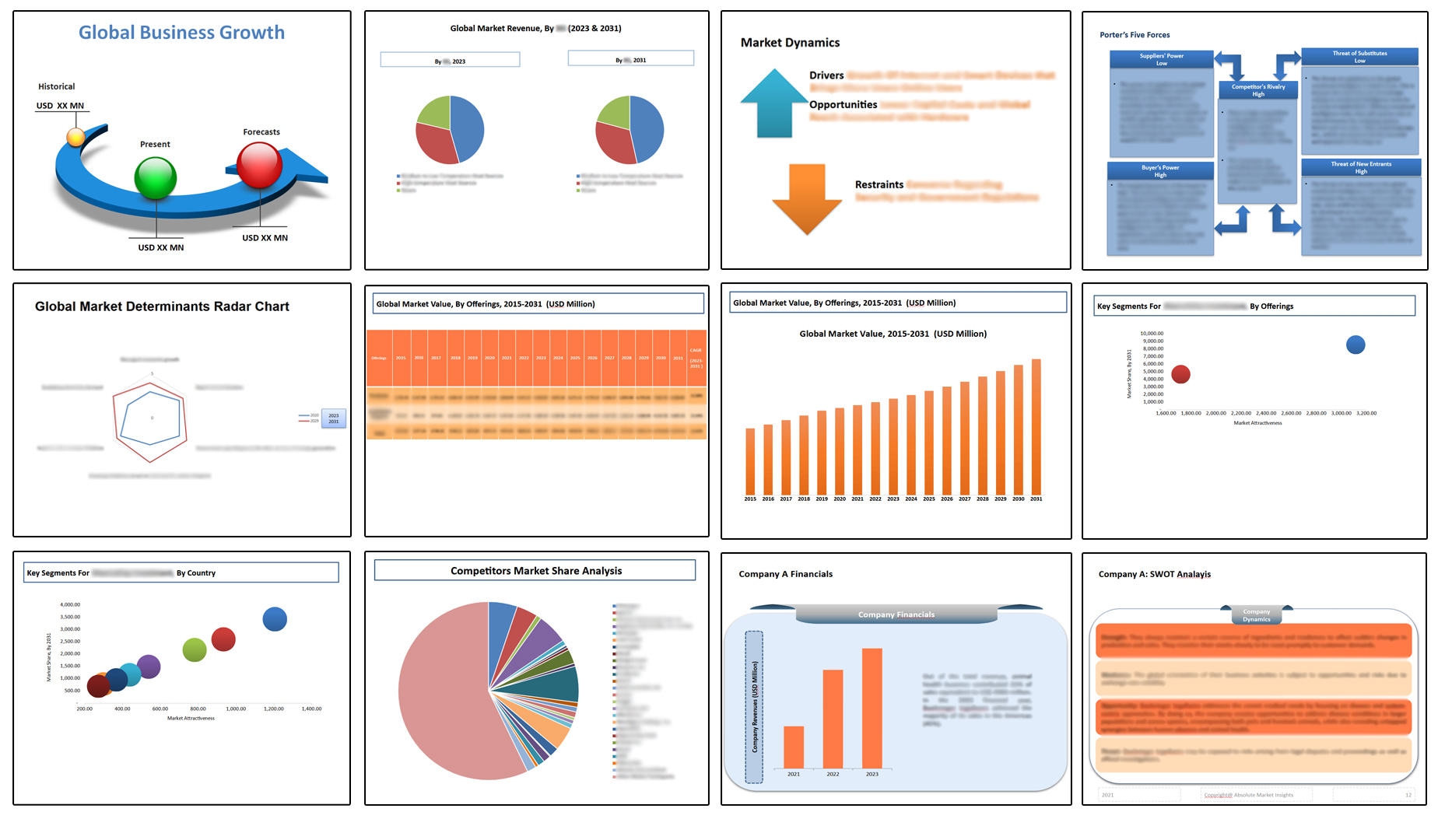
Table of Contents
Note: This ToC is tentative and can be changed according to the research study conducted during the course of report completion.
**Exclusive for Multi-User and Enterprise User.
Global Ultra Processed Food Market:
By Product Type
- Beverages
- Snacks
- Dairy Products
- Cereals and Grains
- Meat and Fish Products
- Sauces and Condiments
- Others
By Distribution Channel
- Online
- Offline
- Supermarkets and Hypermarkets
- Convenience Stores
- Specialty Stores
- Others
By Region
- North America
- S.
- Canada
- Mexico
- Rest of North America
- Europe
- France
- The UK
- Spain
- Germany
- Italy
- Nordic Countries
- Denmark
- Finland
- Iceland
- Sweden
- Norway
- Benelux Union
- Belgium
- The Netherlands
- Luxembourg
- Rest of Europe
- Asia Pacific
- China
- Japan
- India
- New Zealand
- Australia
- South Korea
- Southeast Asia
- Indonesia
- Thailand
- Malaysia
- Singapore
- Rest of Southeast Asia
- Rest of Asia Pacific
- Middle East & Africa
- Saudi Arabia
- UAE
- Egypt
- Kuwait
- South Africa
- Rest of Middle East & Africa
- Latin America
- Brazil
- Argentina
- Rest of Latin America
The Niche Research approach encompasses both primary and secondary research methods to provide comprehensive insights. While primary research is the cornerstone of our studies, we also incorporate secondary research sources such as company annual reports, premium industry databases, press releases, industry journals, and white papers.
Within our primary research, we actively engage with various industry stakeholders, conducting paid interviews and surveys. Our meticulous analysis extends to every market participant in major countries, allowing us to thoroughly examine their portfolios, calculate market shares, and segment revenues.
Our data collection primarily focuses on individual countries within our research scope, enabling us to estimate regional market sizes. Typically, we employ a bottom-up approach, meticulously tracking trends in different countries. We analyze growth drivers, constraints, technological innovations, and opportunities for each country, ultimately arriving at regional figures.Our process begins by examining the growth prospects of each country. Building upon these insights, we project growth and trends for the entire region. Finally, we utilize our proprietary model to refine estimations and forecasts.
Our data validation standards are integral to ensuring the reliability and accuracy of our research findings. Here’s a breakdown of our data validation processes and the stakeholders we engage with during our primary research:
- Supply Side Analysis: We initiate a supply side analysis by directly contacting market participants, through telephonic interviews and questionnaires containing both open-ended and close-ended questions. We gather information on their portfolios, segment revenues, developments, and growth strategies.
- Demand Side Analysis: To gain insights into adoption trends and consumer preferences, we reach out to target customers and users (non-vendors). This information forms a vital part of the qualitative analysis section of our reports, covering market dynamics, adoption trends, consumer behavior, spending patterns, and other related aspects.
- Consultant Insights: We tap into the expertise of our partner consultants from around the world to obtain their unique viewpoints and perspectives. Their insights contribute to a well-rounded understanding of the markets under investigation.
- In-House Validation: To ensure data accuracy and reliability, we conduct cross-validation of data points and information through our in-house team of consultants and utilize advanced data modeling tools for thorough verification.
The forecasts we provide are based on a comprehensive assessment of various factors, including:
- Market Trends and Past Performance (Last Five Years): We accurately analyze market trends and performance data from preceding five years to identify historical patterns and understand the market’s evolution.
- Historical Performance and Growth of Market Participants: We assess the historical performance and growth trajectories of key market participants. This analysis provides insights into the competitive landscape and individual company strategies.
- Market Determinants Impact Analysis (Next Eight Years): We conduct a rigorous analysis of the factors that are projected to influence the market over the next eight years. This includes assessing both internal and external determinants that can shape market dynamics.
- Drivers and Challenges for the Forecast Period:Identify the factors expected to drive market growth during the forecast period, as well as the challenges that the industry may face. This analysis aids in deriving an accurate growth rate projection.
- New Acquisitions, Collaborations, or Partnerships: We keep a close watch on any new acquisitions, collaborations, or partnerships within the industry. These developments can have a significant impact on market dynamics and competitiveness.
- Macro and Micro Factors Analysis:A thorough examination of both macro-level factors (e.g., economic trends, regulatory changes) and micro-level factors (e.g., technological advancements, consumer preferences) that may influence the market during the forecast period.
- End-User Sentiment Analysis: To understand the market from the end-user perspective, we conduct sentiment analysis. This involves assessing the sentiment, preferences, and feedback of the end-users, which can provide valuable insights into market trends.
- Perspective of Primary Participants: Insights gathered directly from primary research participants play a crucial role in shaping our forecasts. Their perspectives and experiences provide valuable qualitative data.
- Year-on-Year Growth Trend: We utilize a year-on-year growth trend based on historical market growth and expected future trends. This helps in formulating our growth projections, aligning them with the market’s historical performance.
Research process adopted by TNR involves multiple stages, including data collection, validation, quality checks, and presentation. It’s crucial that the data and information we provide add value to your existing market understanding and expertise. We have also established partnerships with business consulting, research, and survey organizations across regions and globally to collaborate on regional analysis and data validation, ensuring the highest level of accuracy and reliability in our reports.
